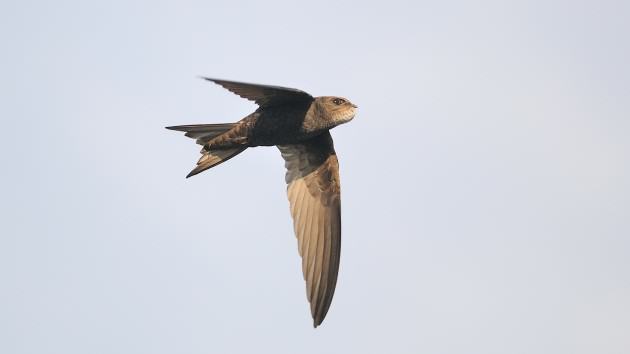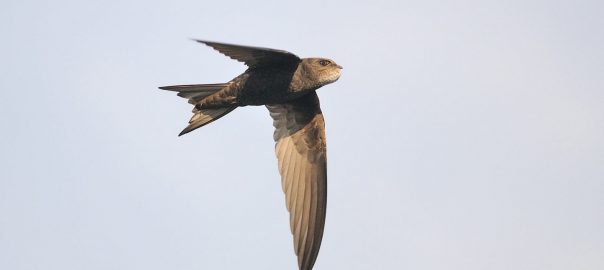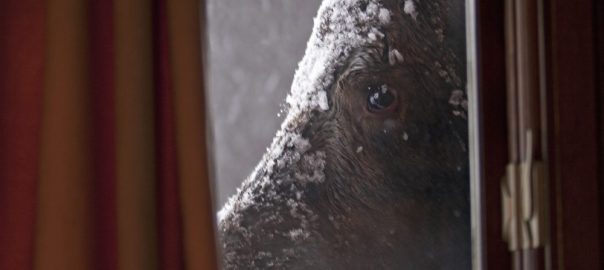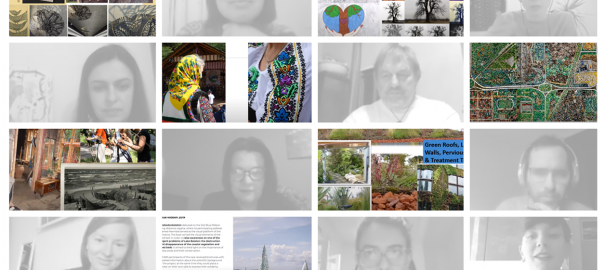The swifts have gone. They left about a week ago and the sky is silent over British towns and cities. By now they will be well on their way south, quartering marshes in the south of France and Spain, making for Gibraltar where they cross to Africa; airborne now until they return next May.
They are not with us for long, but for many people the screaming flocks around the rooftops are the very essence of summer. They are as much a part of urban life as we are, for these birds are totally dependent on buildings for their nest sites. Some colonies in older towns and cities depend on individual buildings, or old walls, which have been occupied for many years. The Wailing Wall in Jerusalem is thought to be the oldest known site of a colony. Ancient city walls of Siena in Italy have supported colonies of swifts for several hundred years. This is typical of many European towns dating from the medieval period with old buildings and town walls still supporting substantial colonies within the urban fabric. Roof spaces of imposing 19th Century buildings such as museums and City Halls, along with housing of the same period, are also favoured nesting locations.

The colony of swifts that occupies the roof of the University Museum of Science in Oxford provided the basis for one of the most extraordinary ornithological studies, described by David Lack in his book Swifts in a Tower in 1956. He and his wife Elizabeth produced a detailed account of the life history and ecology of swifts that is a model in the literature of urban ecology.
Although we know a great deal about the intricacies of their lifestyle it has been difficult to make accurate estimates of their population both nationally and locally. During the 1980s and 90s most assessments assumed the UK swift population was relatively stable. However, since 2000 a number of surveys suggest that there has been a substantial decline in numbers. The British Trust for Ornithology estimates that over the period 1995 to 2010 numbers fell by 38% in the UK and by 46% in the Republic of Ireland. Following this the swift was put on the Amber List of species that are cause for concern.
As long distance migrants wintering in southeast Africa we can expect that swifts will be susceptible to ecological changes affecting their wintering grounds and migration routes. Current research is pinpointing these areas with remarkable accuracy, but we are a long way from knowing whether significant ecological changes are taking place. The reason for declining numbers may lie much closer to home. We know that great changes are affecting traditional breeding sites in urban areas of the UK and elsewhere in Europe, and it is now widely accepted that these changes could be responsible for declining numbers.
The fact is that new townscapes offer fewer opportunities for swifts. Modern buildings of glass and concrete have no suitable holes for nest sites, and older buildings especially private houses that were at one time suitable are increasingly being re-roofed in ways that make them inaccessible. Modern construction techniques are creating new urban landscapes with no room for swifts.
But need this be so? The lack of provision for swifts is not intentional. Their needs simply do not figure on the radar of most architects and developers who are more concerned with the functional and aesthetic qualities of new buildings. But since 2000 a number of new organisations have been set up to raise public awareness about what is happening and to promote the use of artificial nesting chambers in new buildings. Swift Conservation promotes action plans for swifts in many towns and cities, which have proved to be very successful. It has also tackled the building industry head-on to promote the use of nesting chambers in new developments.
A great variety of swift-bricks and nesting boxes are now available, designed to be incorporated into new buildings or added to existing ones. Swift bricks are standard sized building blocks, with a hole leading to an internal nesting chamber. The nest is entirely self-contained and there is no danger of any mess inside the building. The only external sign is a small hole in the wall. Other kinds of boxes can be fitted under the eaves of existing domestic and commercial buildings. Successful schemes using swift bricks include a number of notable buildings such as London’s police HQ at New Scotland Yard and the 2012 Olympic Village. In 2011 South Cambridgeshire District Council won the Best Practice Award from the UK Institute of Ecology and Environmental Management for a village project called Saving the Fulbourn Swifts, which involved fitting nest boxes to a large number of modern houses. This was particularly significant because architects and developers gain prestige from such awards
It seems that advice provided to businesses and other organisations by Swift Conservation has led to a significant shift in attitudes within the development industry. There is now a willingness to act when pressure is applied. The widespread adoption of such schemes might be precisely what is needed to reverse the current decline in numbers of swifts.
But some people are going a step further with the construction of swift towers akin to dovecots which can be erected anywhere in the built environment on car parks, commercial business estates and even on rooftops. Once the need is identified the possibilities are endless.
David Goode
London
Abridged from Nature in Towns and Cities by David Goode 2014 Published by Harper Collins












David, well done, as always! It’s great to hear from you after a long absence from Portland and great to reconnect last fall in London. As you know, we have our own cause celebre here in Portland at Chapman elementary school where more than 40,000 Vaux’s Swifts gathered mid-September (ours won’t leave for the south until late September) to utilize an active chimney. Unfortunately the teachers militated with their administration to get rid of the swifts owning to cold mornings in their classrooms. Audubon Society of Portland stepped in and raised $50,000 to contruct a new chimney and decommission the old chimney which now serves the role purpose of swift accommodation.
Bob Sallinger and colleagues at Portland Audubon have produce a Guide to Bird Friendly Buildings for the Portland region and I will be certain that Bob circulates your piece to his collaborators and the architectual community in our region.
Thanks as always for your continued contributions to nature in the city.
Mike Houck, Director
Urban Greenspaces Institute
Portland, OR
[email protected]
PS, haven’t yet received a copy of your new book for review! You should plug it on TNOC blog….
here across the pond, we have been working on this issue for awhile – see http://www.chimneyswifts.org/